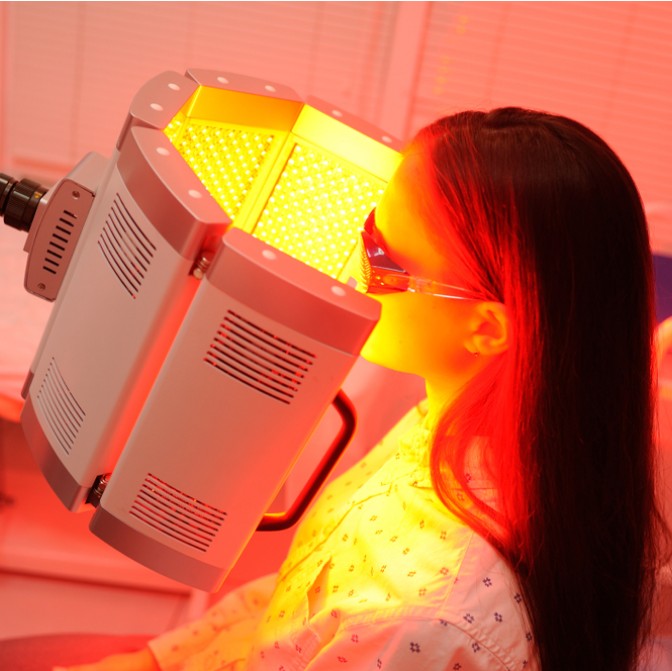Latest Developments in Photodynamic Therapy for Rosacea in June 2024
this latest research is published by Professor Xiuli Wang, from TongJi University.

Overview
Rosacea, a chronic and inflammatory skin condition predominantly affecting the central face, has been linked to various factors including genetic predisposition, immune system irregularities, and disruptions in skin and sebaceous gland function. Traditional treatments, such as minocycline, doxycycline, and hydroxychloroquine, can effectively manage acute symptoms but often fall short in addressing chronic inflammation and recurrence, and carry the risk of systemic side effects. Photodynamic therapy (PDT), particularly using 5-aminolevulinic acid (ALA), has emerged as a targeted treatment option by addressing underlying issues in sebaceous gland function, skin microbiome, and immune regulation.
ALA-PDT: A Targeted Approach
Recent clinical reports highlight the efficacy of ALA-PDT in treating rosacea, showcasing its potential as a targeted therapeutic option. Despite these promising results, ALA-PDT faces challenges in clinical practice due to the varied clinical presentations of rosacea and difficulties in optimizing treatment parameters. Consequently, ALA-PDT has not yet achieved high-level evidence in clinical guidelines and is cautiously recommended, with a grade D level of evidence in the latest Chinese rosacea guidelines.
Comparative Study: ALA-PDT vs. Minocycline
Our team conducted a randomized controlled trial comparing ALA-PDT with oral minocycline, a standard treatment for rosacea. The study revealed that 3-5 sessions of ALA-PDT were non-inferior to 8 weeks of minocycline in reducing papulopustular lesions and improving quality of life in patients with moderate-to-severe rosacea. Moreover, ALA-PDT appeared to reduce the recurrence rate of rosacea. Notably, ALA-PDT significantly decreased the density of Demodex mites in a shorter time, suggesting a link between mite clearance and rosacea recurrence. The main adverse effect observed with ALA-PDT was transient erythema, which typically resolved within 7-14 days and was manageable compared to the systemic side effects of traditional medications. For patients experiencing prolonged erythema, adjunctive treatments such as red light therapy or IPL were effective.
Innovation in Treatment: IPL-PDT
To further enhance treatment outcomes and minimize post-treatment adverse effects, our team developed an IPL-PDT protocol and conducted a prospective study on its efficacy in moderate-to-severe rosacea. The study demonstrated a 75% success rate in reducing the IGA-RSS score, along with reductions in papulopustular lesions, erythema, and improvements in quality of life. Adverse effects were minimal and typically resolved within 1-7 days. These findings suggest that IPL-PDT may be an effective and safe treatment for managing persistent erythema and preventing recurrence in rosacea.
Conclusion
Photodynamic therapy represents a significant advancement in the treatment of rosacea, offering improvements in both clinical symptoms and patient quality of life. However, further large-scale randomized controlled trials are necessary to establish its long-term efficacy and safety.

